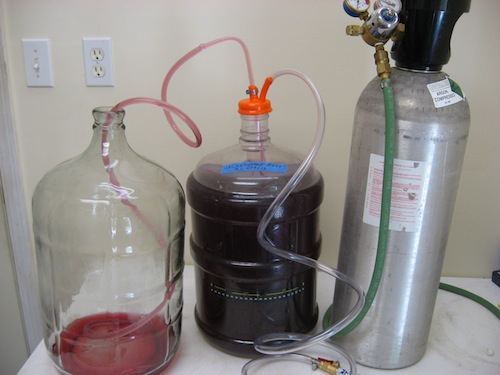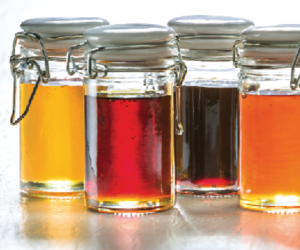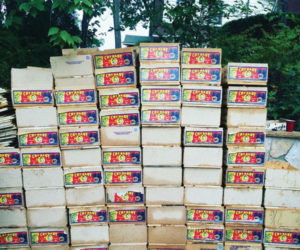For anyone that has been in the hobby for a while, you’ve seen the instructions, “Siphon wine into a vessel for aging,” or some variation of that. But tips and tricks to racking often go undisclosed. Racking wine is in its essence a simple process, but can easily be done poorly and negatively impact your wine. So today we’re going to run through some basic concepts of transferring your wine and ways you can improve your process to better your wine.

Ways To The Means
Home winemakers will transfer their wines using either gravity to allow the wine to “fall” from one vessel to the other, or use an external force to either push or pull the wine into the receiving vessel. The first challenge to the transfer process is getting the line primed (filled with wine) to get the process going. Having a spigot near the bottom of your fermenter allows the transfer to occur with a simple siphon tube and the tube will self prime with the help of gravity. If you don’t have a spigot, then filling the tube with water, then submerging one end of the tube in your wine while placing the receiving vessel below allows the wine to flow from the higher spot to the lower spot. The water in the tube acts as the priming agent.
An auto-siphon is a hybrid system that can be purchased at any home winemaking or beermaking supply store. The auto-siphon starts the priming process by having the winemaker simply pull wine up into an oversized syringe-like tube. A clapper valve then closes as you push down on the syringe, forcing the wine up into the transfer line to achieve a prime.
Serious winemakers can step up to purchasing a wine transfer pump. In the commercial world there are many kinds of pumps used for various purposes: Impeller pumps, lobe pumps, vane pumps, progressive cavity pumps, etc. But in the amateur world, diaphragm pumps are the most commonly used. They’re self priming and gentle on the wine during transfers. They can be seen in various configurations such as acting like a vacuum pump in the All-In-One Wine Pump or it can be used as an inline pump. Another mechanical way to push the wine from one vessel to another is to use compressed CO2, but this is not a common practice in the wine world.
When To Transfer
Wine is often racked many times early in its life for a multitude of reasons. Wine kit users should try to follow the instructions found in their kit on when to transfer. For winemakers using frozen must or juice, the first racking will not occur until after primary fermentation has finished. For fresh grape winemakers, first racking often will occur after the juice has been pressed from the grapes and unwanted particulates (gross lees) have had time to settle to the bottom. A second racking may be required for bigger red wines like a Cabernet Sauvignon.
A final round of racking is often employed once the fine lees are settled and a fining agent has been employed. This will often be a final racking of the wine unless more clarification is required before packaging.
Racking Strategies
For the most part, winemakers want to utilize what I would call a quiet rack, meaning that the tube in the receiving vessel is submerged in the wine as soon as there is enough liquid to get it under. This minimizes the oxygen pickup that occurs during the racking process. To further minimize this issue, an inert gas such as argon or carbon dioxide could be used to “purge” the receiving vessel so that the wine has minimal contact with oxygen. This would only be truly needed for more delicate wines like whites and rosés.
Splash racking is the other style of racking and that would only be desired for bigger red wines where a strong tannin presence is noted. Oxygen introduced during the splash racking process can help bind the tannins and help them elongate and eventually fall out of solution, smoothing out the wine’s profile. Notes of sulfur can also be knocked down by a splash racking. To perform a splash rack, simply remove the tubing from below the liquid level to allow the wine to mix in with the oxygen found in the vessel’s air. Splash racking should only be employed early in the wine’s life, either in the first or second racking — never after longer-term aging has occurred.
Other Tips for Racking
For anyone that plans to step up to making more than 5-gallon (19-L) batch sizes or has a bad lower back, there are two popular options. First is moving from a gravity-fed racking system to a pump-driven one like the ones mentioned earlier in this column. The alternative to this though is to devise a hoist system. These can be operated using either a secure ratchet, electric winch, or other mechanical lift system.
Finally a note about tubing dimensions and how they affect transfer rates. Remember back in arithmetic that the area of a circle grows exponentially based on its radius: A = πr2. So if you double your tubing’s radius, you’re not just doubling its transfer speed/volume, you’re squaring it. While this can mean much faster transfers, it also can create a lot more turbulence and potential for oxygen ingress if not handled properly. Just some factors to consider.




